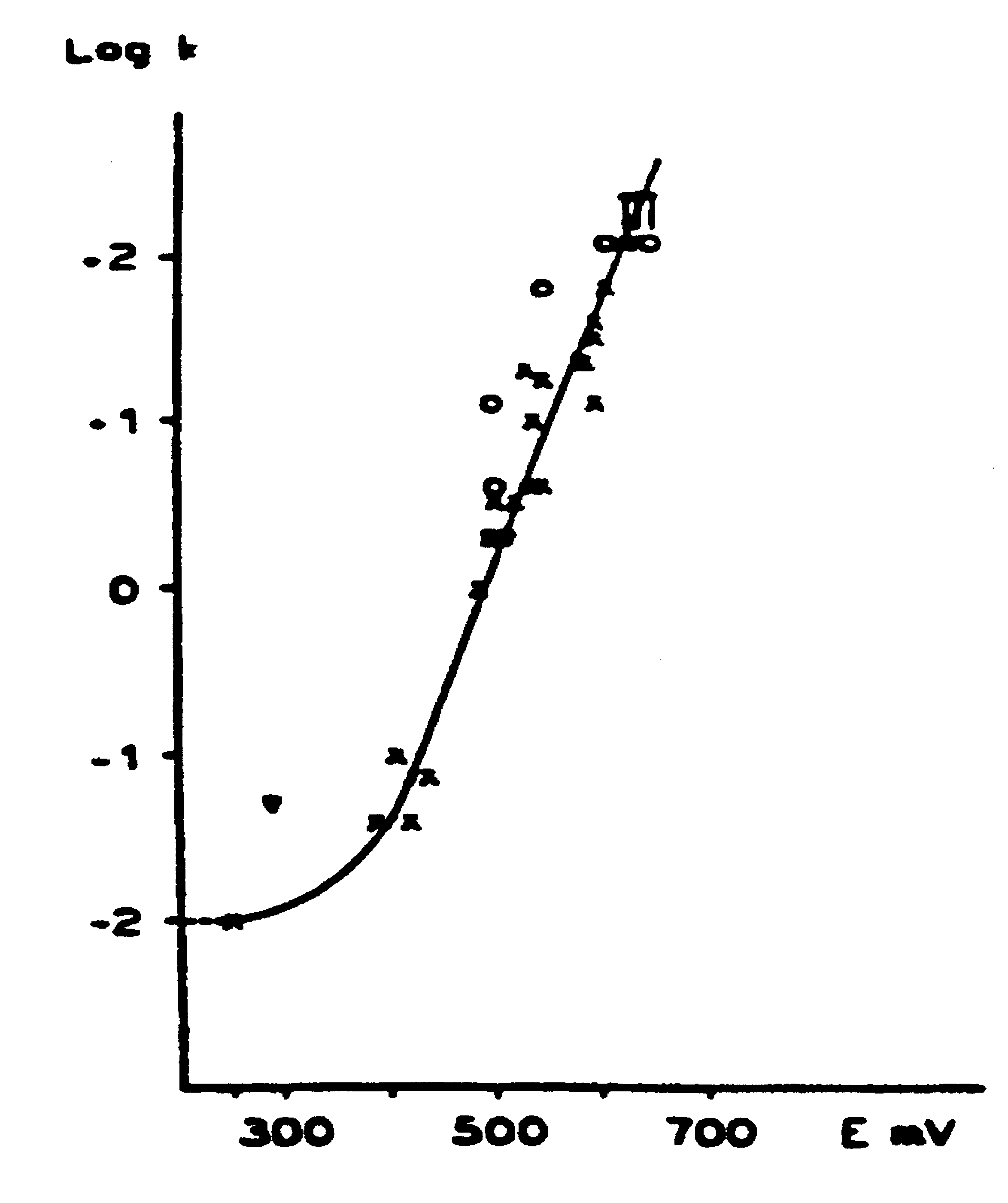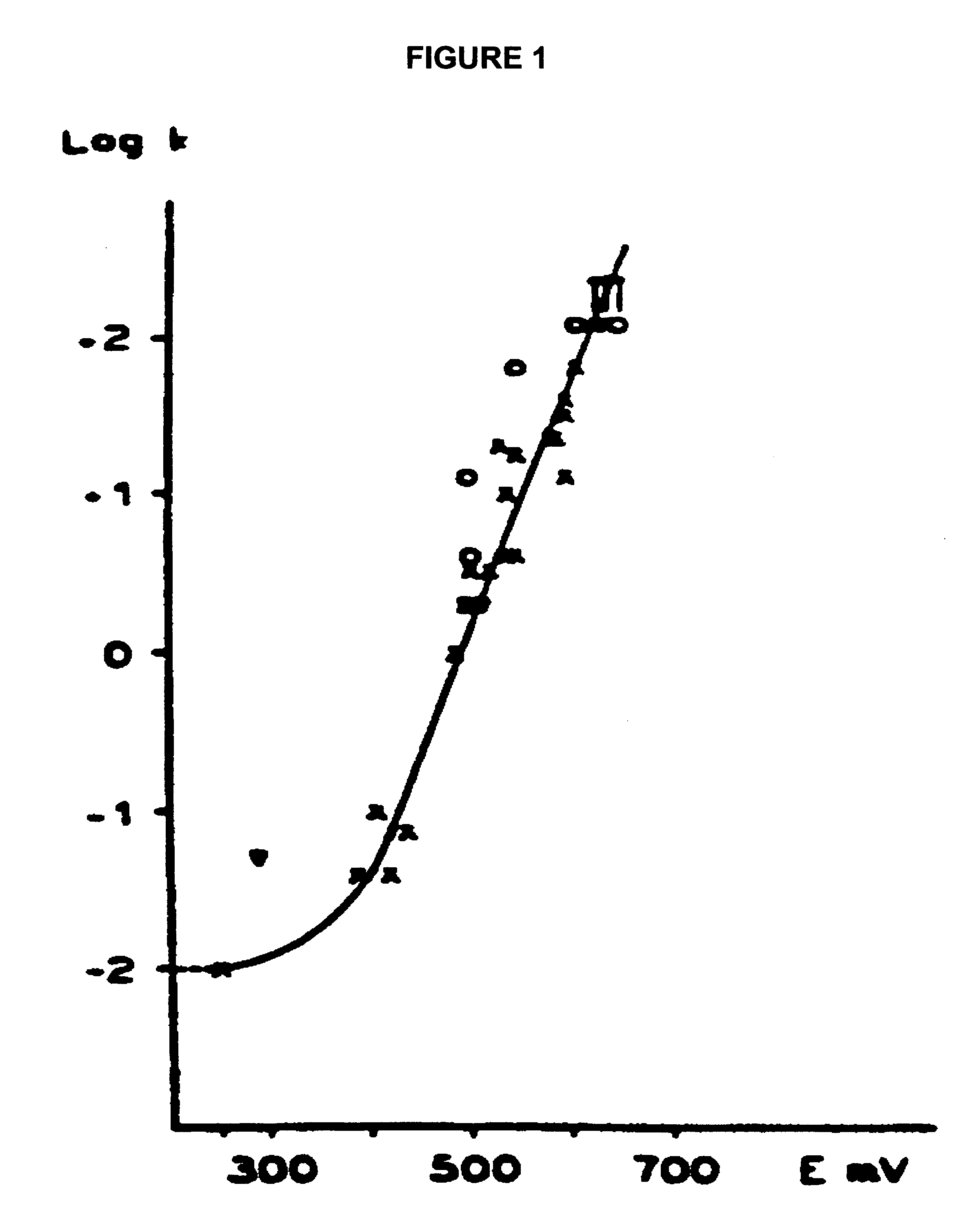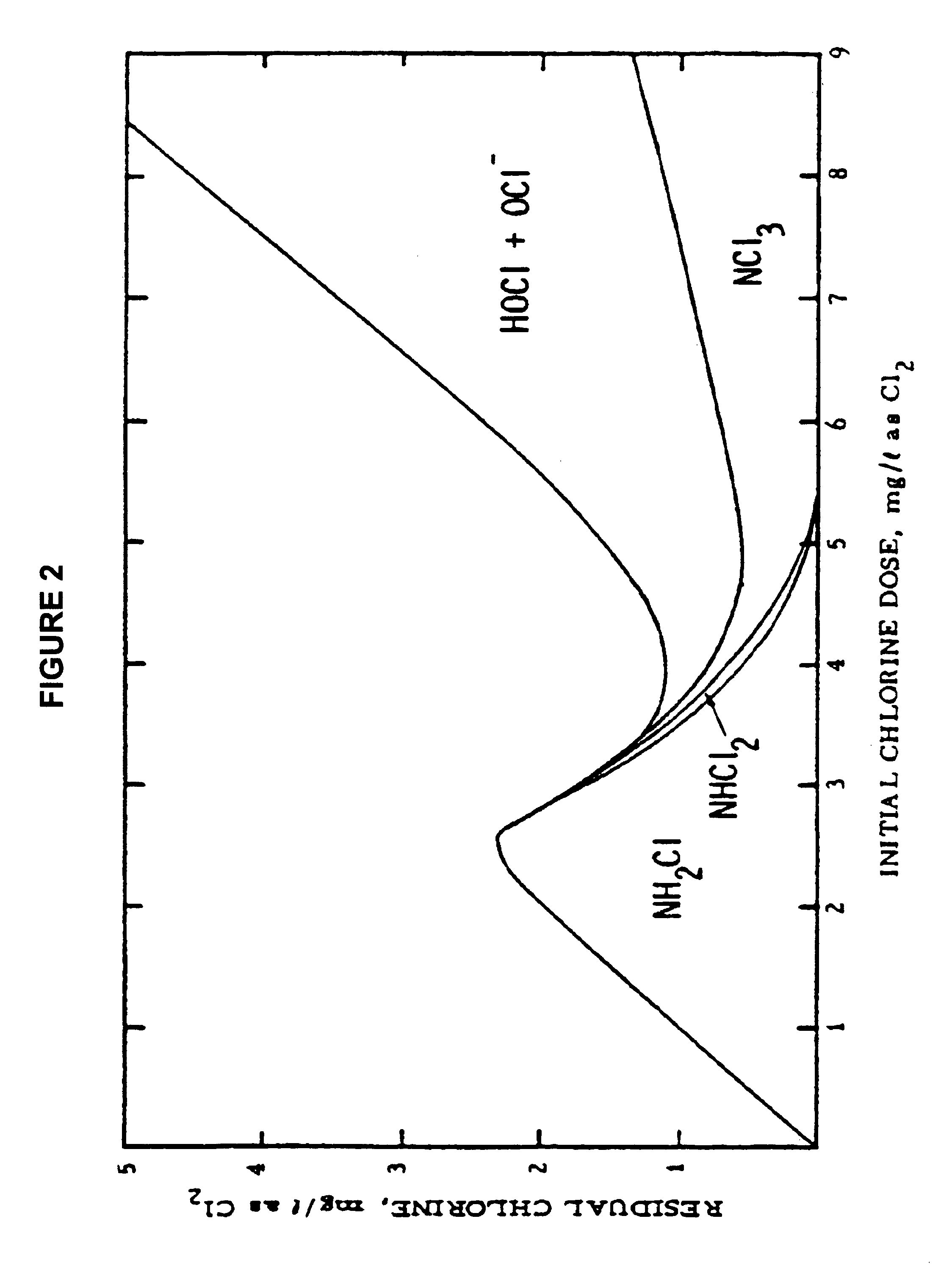Composition and process for enhanced sanitation and oxidation of aqueous systems
a technology of aqueous solutions and oxidation processes, which is applied in the direction of halogen oxide/oxyacids, other chemical processes, water softening, etc., can solve the problems of severe irritation of aquatic facility users, inability of swimmers, bathers to come in contact with treated water, and inability to remove trihalomethanes and chloramines in the water undesirably, so as to improve the sanitizing and oxidizing efficiency of the resulting solution,
- Summary
- Abstract
- Description
- Claims
- Application Information
AI Technical Summary
Benefits of technology
Problems solved by technology
Method used
Image
Examples
example 1
[0125]1000 mL of a water-based stock solution containing 7.0 ppm persulfate was prepared by adding potassium persulfate (purchased from Sigma-Aldrich) to water and adjusting the pH to 7.2 using sodium bisulfate. The persulfate level was initially and periodically tested using ammonium thiocyanate and ferrous iron in an acidic solution. The stock solution was divided into 2-500 mL samples, and magnetic stirring rods were added to each sample. Using the magnetic stirrer, each sample was vigorously mixed to achieve a vortex reaching approximately half the distance to the stirring rod.
[0126]
TABLE 1Persulfate Decomposition RateLapsed TimePersulfate Conc. (ppm)Persulfate Conc. (ppm)(Hrs.)with 0.63 ppm Ag catalystwith 0.31 ppm Ag catalyst07.07.034.25.652.14.272.8
[0127]Table 1 shows that the persulfate concentration decreased with time. The test results in Table 1 illustrate that the catalyst comprising silver (Ag), and sourced from Silver nitrate (AgNO3) under condi...
example 2
Algae Destruction
[0132]In an outdoor 360,000 gallon pool contaminated with planktonic algae, 200 lbs of the cobalt monopersulfate composition comprising 99.3 wt % Potassium monopersulfate, 0.5 wt % Magnesium Carbonate, and 0.2 wt % Cobalt Acetate as previously disclosed was added to the system by broadcasting. 40 pounds of soda ash was added to neutralize excess acidity, and the ORP controller was set at 780 mV.
[0133]In 72 hours, the pool water sparkled with no visible signs of algae. The ORP was consistently achieving 780 mV with 2.0-2.5 ppm of free chlorine.
[0134]For comparison purposes, the same pool system during the opening procedure was treated with 500 lbs of calcium hypochlorite and allowed to circulate for 7 days before obtaining the water clarity and being allowed to open to swimmers.
[0135]The superior speed and effectiveness of one of the compositions disclosed in this invention under real-world conditions is again highlighted. Algae can be resistant to control by chlorin...
example 3
K2S2O8 Destruction
[0136]99.8 grams of distilled water was weighed in a 250 ml beaker. 0.6 grams of K2S2O8 was added to the beaker of water, placed on a magnetic stirrer and mixed until dissolved. Sodium bisulfate was added to suppress the pH, with a resulting pH of approximately 3.2. A sample of solution was diluted by carefully weighing out 99 grams of distilled water into a flask, followed by addition of 1-gram of solution and mixed. The diluted sample was tested using a Chemets® Kit K-7870. The resulting solution was measured as having a sodium persulfate concentration of approximately 49 ppm.
[0137]To the remaining sample of persulfate solution in the 250 ml beaker, 0.1 grams of cuprous chloride was added and mixed until dissolved, resulting a clear blue tinted solution about 2 minutes. A 99:1 dilution was again performed and tested using the Chemets Kit K-7870, resulting in a measurement of 0.0 ppm
PUM
| Property | Measurement | Unit |
|---|---|---|
| pH | aaaaa | aaaaa |
| temperature | aaaaa | aaaaa |
| concentration | aaaaa | aaaaa |
Abstract
Description
Claims
Application Information
 Login to View More
Login to View More - R&D
- Intellectual Property
- Life Sciences
- Materials
- Tech Scout
- Unparalleled Data Quality
- Higher Quality Content
- 60% Fewer Hallucinations
Browse by: Latest US Patents, China's latest patents, Technical Efficacy Thesaurus, Application Domain, Technology Topic, Popular Technical Reports.
© 2025 PatSnap. All rights reserved.Legal|Privacy policy|Modern Slavery Act Transparency Statement|Sitemap|About US| Contact US: help@patsnap.com



